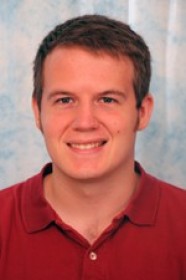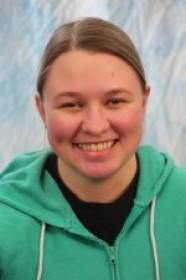PhD Thesis Defense
Factoring Scenes into 3D Structure and Style
Event Location: GHC 4405Abstract: Given a single image of a scene, humans have few issues answering questions about its 3D structure like “is this facing upwards?” even though mathematically speaking this should be impossible. We have similarly have few issues accounting for this 3D structure in answering viewpoint independent questions like ``is this the same [...]
Direct Pose Estimation and Refinement
Event Location: NSH 1305Abstract: We study a fundamental question in pose estimation from vision-only video data: should the pose of a camera be determined from fixed and known correspondences? Or should correspondences be simultaneously estimated alongside the pose? Determining pose from fixed correspondences is known as feature-based, where well-established tools from projective geometry are utilized [...]
The Optical Coherence Tomography Microsurgical Augmented Reality System (OCT-MARS): a novel device for microsurgeries
Event Location: NSH 3305Abstract: We describe the development and testing of the Optical Coherence Tomography Microsurgical Augmented Reality System (OCT-MARS). This system allows surgeons to view real-time medical image data as an in-situ overlay within the surgical field. There are a number of clinical applications for which real time, in situ visualization of otherwise transparent [...]
Expressive Motion for Low Degree-of-Freedom Robots
Event Location: GHC 4405Abstract: As social and collaborative robots move into everyday life, the need for algorithms enabling their acceptance becomes critical. People parse non-verbal communications intuitively, even from machines that do not look like people, thus, expressive motion is a natural and efficient way to communicate with people. This work presents a computational Expressive [...]
Completing Manipulation Tasks Efficiently in Complex Environments
Event Location: NSH 3305Abstract: An effective autonomous robot performing dangerous or menial tasks will need to act under significant time and energy constraints. At task time, the amount of effort a robot spends planning its motion directly detracts from its total performance. Manipulation tasks, however, present challenges to efficient motion planning. Tightly coupled steps (e.g. [...]
Robust Manipulation via Contact Sensing
Event Location: NSH 3305Abstract: Humans effortlessly manipulate objects in cluttered and uncertain environments. In contrast, most robotic manipulators are limited to carefully engineered environments to circumvent the difficulty of manipulation under uncertainty. Contact sensors can provide robots with with the feedback vital to addressing this limitation. This thesis proposes a framework for using feedback from [...]
The Optical Coherence Tomography Microsurgical Augmented Reality System (OCT-MARS): a novel device for microsurgeries
Event Location: NSH 3305Abstract: We describe the development and testing of the Optical Coherence Tomography Microsurgical Augmented Reality System (OCT-MARS). This system allows surgeons to view real-time medical image data as an in-situ overlay within the surgical field. There are a number of clinical applications for which real time, in situ visualization of otherwise transparent [...]
Robust Rearrangement Planning using Nonprehensile Interaction
Event Location: GHC 6501Abstract: As we work to move robots out of factories and into human environments, we must empower robots to interact freely in unstructured, cluttered spaces. Humans do this easily, using diverse, whole-arm, nonprehensile actions such as pushing or pulling in everyday tasks. These interaction strategies make difficult tasks easier and impossible tasks [...]
Efficiently Sampling from Underlying Physical Models
Event Location: GHC 6501Abstract: The capability and mobility of exploration robots is increasing rapidly, yet missions will always be constrained by one main resource: time. Time limits the number of samples a robot can collect, sites it can analyze, and the availability of human oversight, so it is imperative the robot is able to make [...]
Navigation and Physical Interaction with Balancing Robots
Event Location: NSH 1507Abstract: This work describes methods for advancing the state of the art in mobile robot navigation and physical Human-Robot Interaction (pHRI). An enabling technology in this effort is the ballbot, a person-sized mobile robot that balances on a ball. This underactuated robot presents unique challenges in planning, navigation, and control; however, it [...]







.jpg)